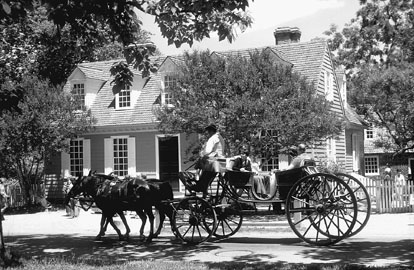

 | Page 1324 |  |
and the introduction of a process that came to be known as artifact cross-mending greatly improved the excavators’ ability to interpret the sequential interrelationships between structures and other on-site features. Through the following quarter century, Colonial Williamsburg publications demonstrating the importance of potsherds and a wide range of other artifacts as a means of reading the colonial past had a lasting impact on the birth and growth of the discipline now globally known as historical archaeology.

Reconstructed dwelling at Colonial Williamsburg
(Spectrum Colour Library)
In 1969, the Colonial Williamsburg Foundation expanded its interpretive interests to include the nearby Carter’s Grove plantation, where archaeologists found the remains of the Martin’s Hundred settlement (1619–1645), much of which had been destroyed in an Indian uprising in 1622. The settlement’s administrative center, Wolstenholme Towne, has been partially reconstructed, and a subterranean museum displays the arms, armor, and other artifacts found there.
(1816–1892)
Daniel Wilson was the first person outside Scandinavia to practice the prehistoric archaeology that had been pioneered by christian j. thomsen and jens jacob worsaae. He also elucidated, if he did not invent, the term prehistory. Wilson was born in Edinburgh, Scotland, 5 January 1816. Between 1837 and 1852 he worked as an engraver, writer, and shopkeeper. The romanticism of Sir Walter Scott motivated him to use his considerable artistic skills to record old buildings that were being demolished in the course of Edinburgh’s urban renewal. Memorials of Edinburgh in the Olden Times (1848), which contained many of his more interesting sketches accompanied by a rambling account of the history of the city, consolidated his reputation as a leading Scottish antiquarian.
Wilson was invited to rearrange the collections of the society of antiquaries of scotland according to the three-age system that Thomsen had devised for the National Museum of Antiquities in Copenhagen. His work on this collection and study of prehistoric monuments led him to publish The Archaeology and Prehistoric Annals of Scotland (1851), the first comprehensive work of prehistoric archaeology in the English
 |  |